Few places in England grab your attention quite like Lulworth Cove and Durdle Door. Tucked away on Dorset’s Jurassic Coast, these two natural wonders show off dramatic cliffs, wild rock formations, and views that honestly look just as good as the postcards.
I’ve wandered all over the coast, but nothing really compares to seeing Durdle Door’s arch rise from the sea or the perfect curve of Lulworth Cove. It’s one of those sights that sticks with you.
If you’re into coastal walks, love a bit of fossil hunting, or just want to see somewhere famous in real life, these spots totally deliver. The trail between them is short, straightforward, and packed with scenery, so you don’t need to be a hardcore hiker to enjoy it.

Ever wondered if they’re overrated? I’ll just say—nope, they really are that good.
Discovering Lulworth Cove: Gateway to the Jurassic Coast
Lulworth Cove makes a brilliant starting point for exploring Dorset’s Jurassic Coast. Its round bay, chalk cliffs, and odd rock shapes always catch my eye.
From the ancient geology underfoot to the handy visitor facilities and the shingle beach, everything here whispers stories from 185 million years ago.
Geological Origins and Unique Landforms
Lulworth Cove sits right in the heart of the Jurassic Coast, a UNESCO World Heritage Site. About 10,000 years ago, relentless waves started carving through the rock layers, shaping the cove we see now.
Hard Portland limestone stands guard at the entrance, but behind it, softer clays and sands have given way under the sea’s attack.
That almost perfect circle? It’s no accident. Once the sea broke through the limestone, it quickly wore away the weaker rocks inside, leaving this unique shape. The bright chalk cliffs on both sides light up the whole place.
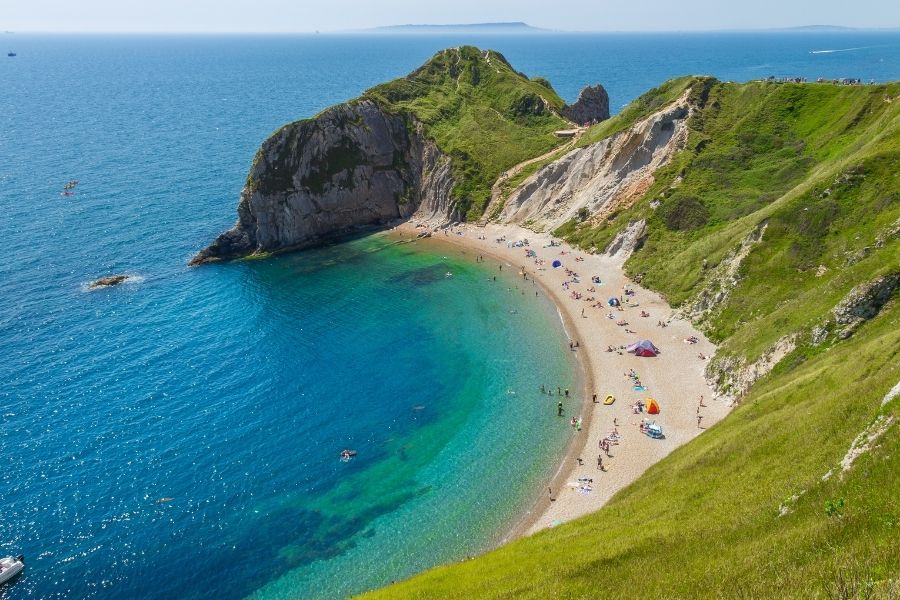
You’ll spot wave-cut notches, sea caves, and the wild “Lulworth Crumple” near Stair Hole. Nature’s power is on full display here.
Exploring the Beach and Surrounding Area
Heading down to Lulworth Cove’s shingle beach, I usually see families poking around rock pools or hunting for shells. The water tends to be calm, with gentle waves lapping at the pebbles.
Sometimes, you can find caves carved out by the sea, especially if you catch it at low tide.
If you climb up at the western end, you’ll reach the Fossil Forest, where ancient tree molds are set in stone. Head east and you’ll find Stair Hole, famous for its folded rocks and that dramatic crumple.
The coastal path linking Lulworth Cove to Durdle Door takes about 30 minutes. Along the way, you’ll watch the landscape shift from sharp cliffs to rolling grassy hills, all with sweeping views of the Jurassic Coast.
Visitor Facilities at Lulworth Cove
Lulworth Cove is refreshingly visitor-friendly. The main car park (postcode BH20 5RQ) sits just a short stroll from the beach and village.
Parking’s pay-and-display, and it fills up fast during peak times.
Public transport runs from West Lulworth to nearby towns, so you don’t have to bring a car. The Lulworth Visitor Centre in the village breaks down the geology and history in a way that actually makes sense.
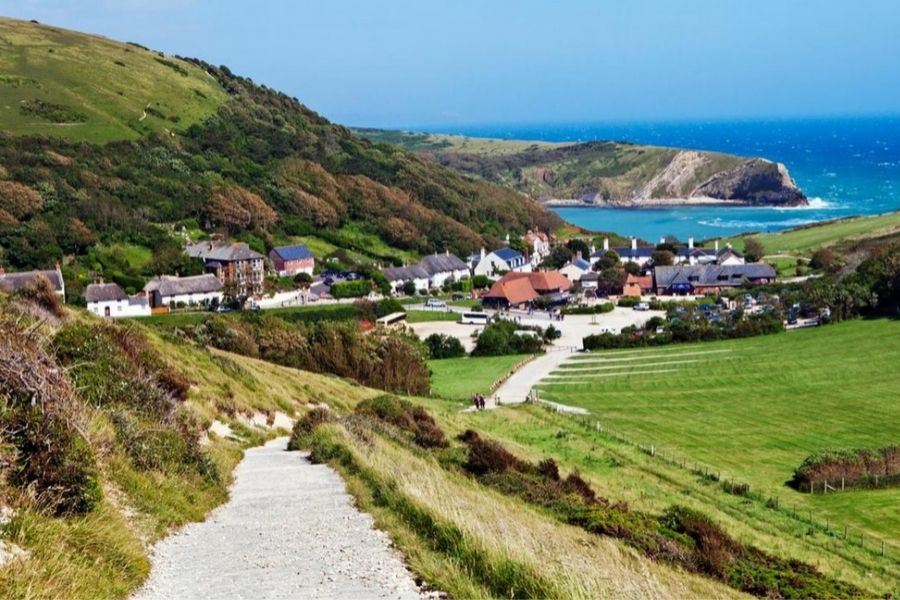
You’ll find shops, cafes, pubs, and toilets close by—handy after a long walk. Some paths get pretty steep or uneven, so I’d recommend sturdy shoes. The Lulworth Estate keeps the area well maintained, from the paths to the viewpoints.
Durdle Door: Dorset’s Iconic Limestone Arch
Durdle Door is one of England’s most iconic sights, and it’s easy to see why. That limestone arch pulls in visitors for its sheer beauty and geological story.
Formation of the Stone Arch and Geological Significance
Durdle Door’s arch exists thanks to pure natural forces. The arch, carved from tough Portland limestone, faces the sea. Over thousands of years, waves battered away the softer rocks behind it, eventually punching a hole straight through.
You can see layers of hard and soft rocks all along this stretch, which explains the wild shapes. Durdle Door tells the story of millions of years of earth’s history, right where land meets sea.
Standing on the cliff path, you’ll spot more sea stacks off the coast, marking where the shoreline once stood. The rock layers here shoot almost straight up, making everything look even more dramatic.
Scenic Beaches: Durdle Door Beach and Man O’War Beach
Two main beaches hug Durdle Door—Durdle Door Beach and Man O’War Beach. Both sit below steep cliffs and give you front-row seats to the arch and the coastline.
Durdle Door Beach mixes sand and pebbles. The water’s usually clear, and you can stand right by the arch as it rises from the sea. It’s a top spot for swimming or a picnic, but the shore drops off quickly, so be careful.
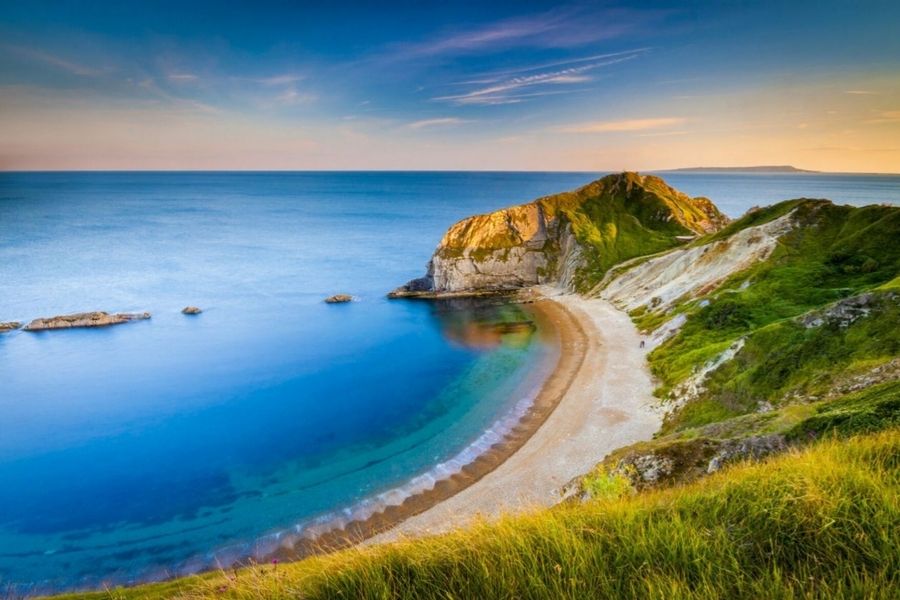
Man O’War Beach sits next door and feels a bit quieter. This curved cove faces the other side of the limestone headland, and its calm waters are perfect for a paddle or just chilling out.
Here’s a quick side-by-side:
| Beach Name | Features | Best For |
|---|---|---|
| Durdle Door Beach | Sandy, close to arch | Photos, swimming |
| Man O’War Beach | Sheltered, curved bay | Paddling, quiet |
Visiting Tips and Accessibility
Reaching Durdle Door takes a bit of planning. I usually park at the car park on top of the cliffs, right by the Lulworth Estate entrance.
A marked path leads down to the coast. The coastal path is well looked after but has steep steps and rough patches. It’s not ideal for pushchairs or anyone who finds walking tough.
Wear good shoes—rain turns those steps slippery fast.
The beaches don’t have shops or lifeguards, so I always bring my own snacks and water. Toilets are near the car park, but not down on the beach.
For the best views, I like to visit early in the morning or late afternoon, when the sun really lights up the limestone. On busy days, the car park fills up quickly, so showing up early makes things a lot easier.
Spectacular Natural Attractions Along the Jurassic Coast
The Jurassic Coast is packed with wild and unique geological sights. Folded rocks, fossil-rich cliffs, sea arches, and secret bays—every stop reveals a new chapter in the earth’s story.
Stair Hole and the Lulworth Crumple
Stair Hole, a small bay near Lulworth Cove, shows off what erosion can do. Here, caves, blowholes, and skinny sea stacks cut into the soft limestone.
The standout is the Lulworth Crumple—a wild, twisted fold in the rock layers right above Stair Hole.
From the viewing path, you get a clear look at the curving Purbeck Beds. The rocks bend and twist, showing off the raw power that shaped this landscape. You’ll also notice sharp edges where the sea keeps cutting into the cliffs.
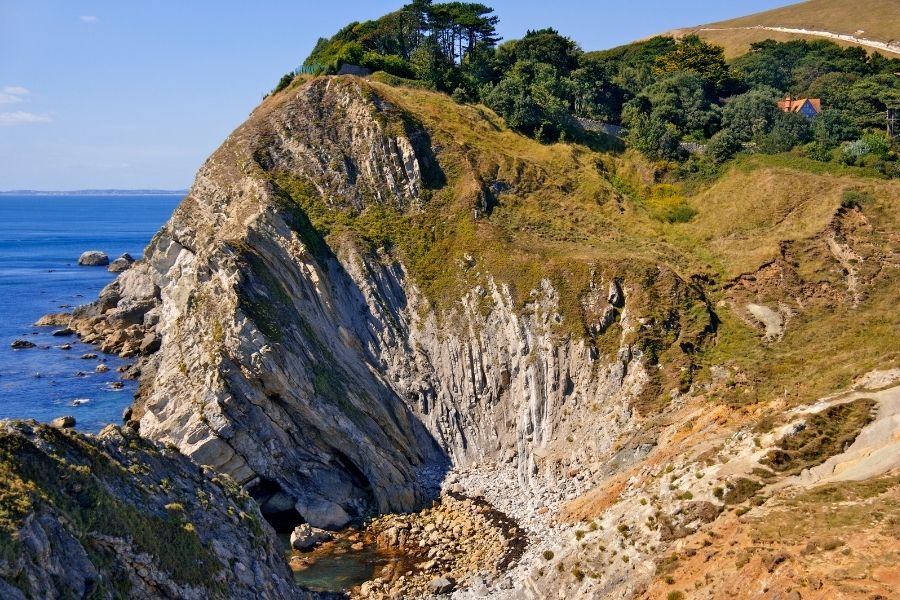
Stair Hole is a great spot to see geology in action.
Mupe Bay and White Nothe
Mupe Bay isn’t the easiest to reach since it’s on Ministry of Defence land, but the walk pays off. The peace and the wide-open channel views always make me pause.
Here, the cliffs show off stripes of chalk and limestone.
White Nothe, a tall chalk headland just east of Mupe Bay, stands out with its clean white cliffs and grassy tops. If you’re lucky and careful, you might spot fossils in the bays—tiny time capsules from ancient sea life.
Sea Stacks, Cliffs, and Caves
Between Lulworth Cove and Durdle Door, you’ll come across all sorts of dramatic landforms. Durdle Door itself is a classic sea arch, carved from stubborn limestone.
On sunny days, the light streaming through the arch is completely mesmerizing.
Tall sea stacks stand offshore, shaped by relentless waves. Jagged cliffs line the coast, and hidden caves appear at low tide. Each feature tells a story of erosion and the ever-changing mix of sandstone, clay, and chalk.
Fossil Forest and Other Rock Formations
I’d recommend checking out the Fossil Forest, though you can only visit at certain times for safety. You’ll find ring-shaped “slices” of ancient tree stumps here, fossilized over 145 million years ago.
Walking through, you’ll see how minerals have turned old forests to stone.
Other cool formations include bands of hard Purbeck limestone and softer Wealden beds stacked above each other. Ammonite fossils and shell prints hide in the clay banks along the cliffs.
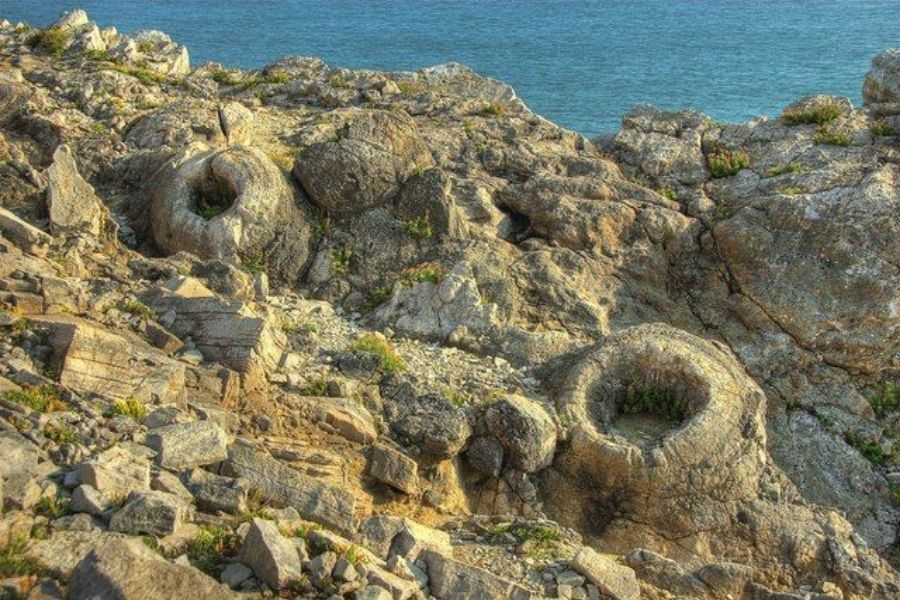
Every trip here teaches me something new about Dorset’s ancient landscapes.
Planning Your Visit: Practical Advice and Experiences
A little planning goes a long way at Lulworth Cove and Durdle Door. Getting around is easy if you know where to park or how to use public transport, and there’s plenty to enjoy whether you’re hiking or visiting with family.
Parking, Maps, and Public Transport
The main Lulworth Cove car park sits close to the visitor centre. There’s plenty of space for cars and coaches, but it fills up early during summer or on weekends.
You’ll spot clear maps near the car park and at the start of the South West Coast Path. These maps show main walking routes, facilities, and nearby sights.
I always grab a paper map from the Lulworth Visitor Centre since mobile signal can vanish out on the trails.
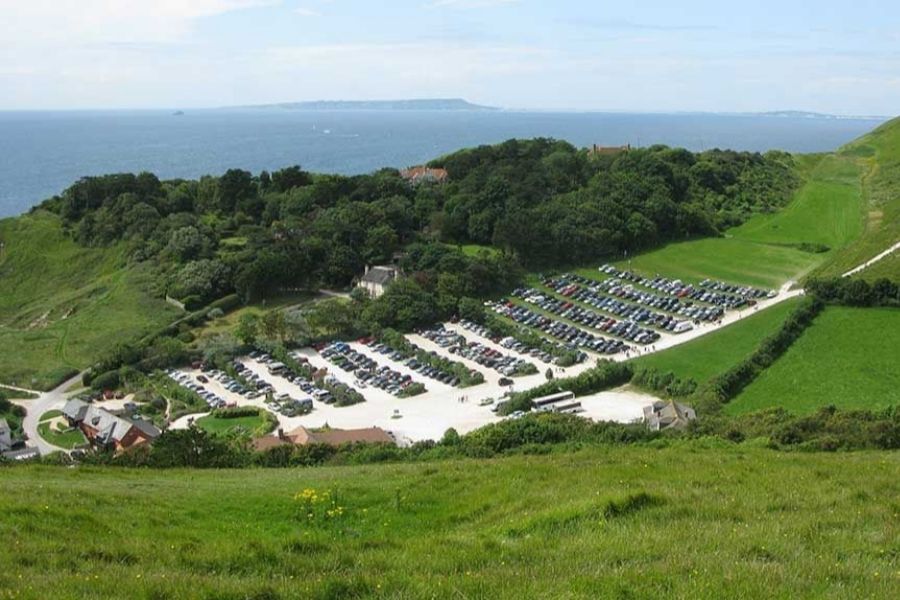
Public transport links the area to nearby towns like Wareham, so you don’t have to drive. Always check the latest bus timetables—routes change with the seasons.
Walking and Hiking the South West Coast Path
The South West Coast Path runs straight from Lulworth Cove to Durdle Door—about 1.5 miles one way. The path starts behind the car park, through a wooden gate, then climbs a steep hill with stone steps.
The views are worth the effort, but the trail does get steep and slippery, especially after rain. I always wear sturdy shoes and pack some water.
There aren’t any barriers along the cliff edges, so keep an eye out if you’ve got kids or the wind picks up.
You can return along the same path or carry on further along the coast if you’re feeling energetic. Always check the weather before you set off, as it can change fast.
Family Activities: Rock-Pooling, Interpretation Panels, and Ice Cream
Families have plenty to do here, especially at low tide. Rock-pooling in Lulworth Cove is a favorite—look for sea creatures near the pebbles at the cove’s mouth. Local shops sell buckets and nets if you need them.
The Lulworth visitor centre has interactive interpretation panels about the geology and wildlife. These displays are perfect for keeping kids curious and entertained. Staff are happy to suggest family-friendly walks too.
After exploring, I never skip the ice cream stalls by the beach and car park. There are picnic spots and cafes nearby, so it’s easy to relax and soak up the views after a day outside.
Unforgettable Adventures and Local Attractions
There’s more to the Jurassic Coast than just jaw-dropping views. You can try water sports at Lulworth Cove, explore historic sites, or set off on scenic Dorset walks—there’s something for every mood and energy level.
Coasteering, Kayaking, and Diving
Coasteering at Lulworth Cove? Honestly, it’s a blast. I get to scramble, swim, and leap along the jagged coastline, feeling a real rush.
Guided tours set off from the main car park, and they’ve always handed me all the gear—wetsuits, helmets, the works. If you’re new to this, the guides are friendly and keep a close eye on everyone.
Sea kayaking draws a crowd here, especially near Durdle Door and its dramatic limestone arch. The water’s so clear that it almost feels like you’re floating above another world.
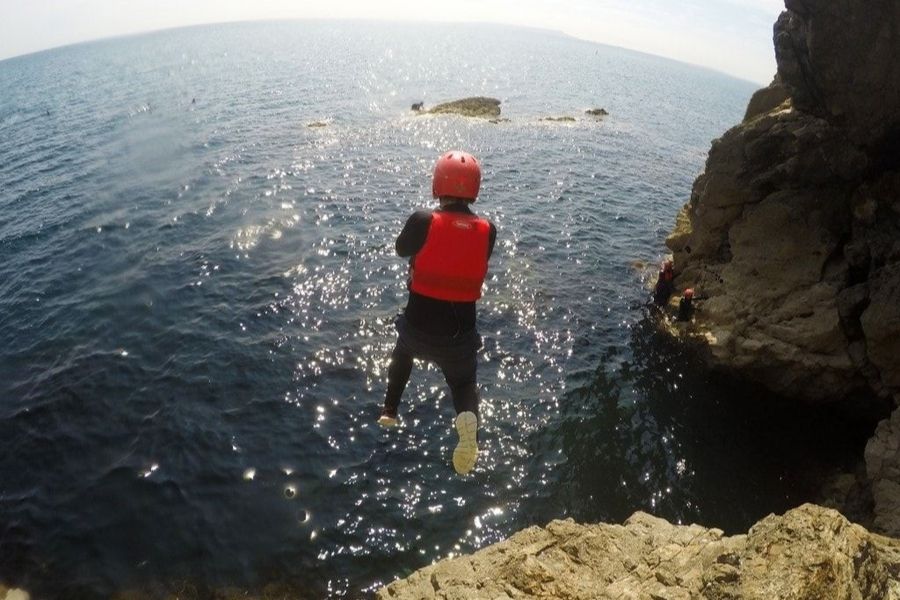
Kayak rentals and tours are easy to book ahead of time. Some routes wind past hidden caves and chalky stacks—kind of surreal, actually.
Diving here takes me below the surface, where the crowds thin out and the real magic begins. I’ve spotted all sorts of marine life and stumbled across wild underwater rock formations.
Some dive spots cater more to experienced folks, but beginner lessons are available from local guides. It’s worth asking around if you’re curious.
Key Highlights:
- You’ll find all the action near the main Lulworth Cove car park.
- Kayaking and coasteering really shine in the summer months.
- Always double-check tide times and weather before heading out.
Camping and Staycation Options
Camping at Lulworth Cove puts me right in the heart of the scenery. The campsites come with restrooms, showers, and usually a little shop for last-minute supplies.
I can go classic with a tent or, if I’m feeling fancy, book a glamping pod for a little extra warmth and comfort.
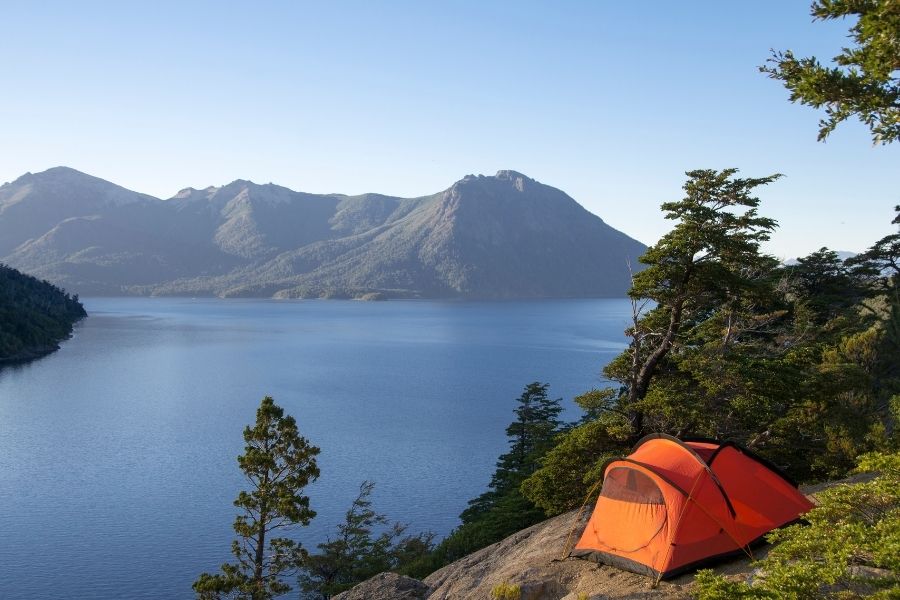
Table: Accommodation Options
| Option | Distance to Cove | Facilities | Book Ahead? |
|---|---|---|---|
| Campsite | 0.5 miles | Showers, Wi-Fi | Yes |
| Glamping Pod | 0.5 miles | Power, Heating | Yes |
| Local Holiday Park | 1 mile | Pool, Restaurant | Yes (Summer) |
Staying in Lulworth makes it easy to hop between Lulworth Cove and Durdle Door without any hassle. It also frees up time to wander through West Lulworth village and maybe duck into a cozy pub.
Wild camping isn’t allowed here, so I always make sure to reserve a spot ahead of time.
Exploring the Wider Dorset Area: Lulworth Castle to Old Harry Rocks
Dorset’s charms really open up as soon as you leave Lulworth Cove. I wandered over to Lulworth Castle—it’s a lovingly restored 17th-century estate, and the gardens are just perfect for a lazy afternoon stroll.
There’s woodland too, which feels almost magical on a misty morning. Not too far away, Corfe Castle rises dramatically above its village. If you’re into history, you’ll find this ruin absolutely fascinating.
I took a scenic drive once, weaving through countryside marked by thatched cottages and old stone walls built from Portland stone. It’s the kind of route that makes you want to stop for tea somewhere cozy.
Eventually, the coast pulls you back in. Old Harry Rocks never disappoints—those chalk cliffs look unreal against the sea, especially if you catch them in the evening light.
You’ll find several companies running guided walks here. Sometimes, they even combine these with day trips from London, so you can hop on a train and a bus, then find yourself at Durdle Door.
Boat cruises along this stretch offer a totally different view of the coastline. I’d say it’s worth it if you want to see Dorset from a fresh angle.

